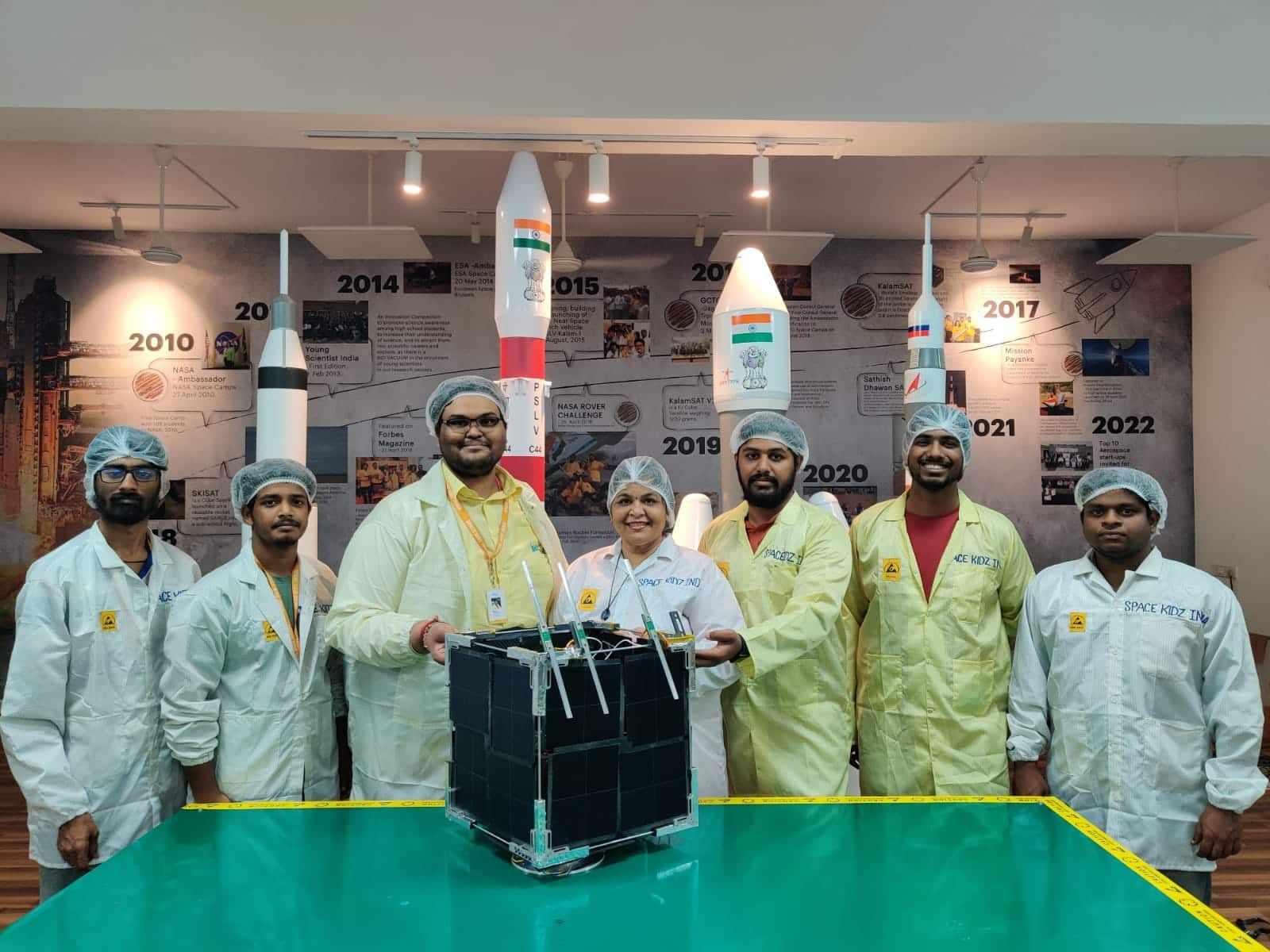



Pratap Gagare, a driver from a village in Maharashtra's Ahmednagar district, is a proud man today. With good reason: his 14-year-old daughter's work is soon set to reach space.
Vidya Gagare, along with 749 other girls studying in government schools across the country, came together to create the AzaadiSat 2.0 satellite for Chennai-based start-up Space Kidz India.
AzaadiSat 2.0, which comprises 75 student experiments, is part of the payload aboard the Indian Space Research Organisation’s SSLV-D2, which successfully launched on February 10 at around 9 am from the Satish Dhawan Space Centre in Sriharikota.
As of 10.30 am on February 10, Space Kidz India confirmed that their satellite is operational in the orbit. More details are awaited regarding its functioning.
Programming sensors
The girl students, the majority of whom are between the ages of 14-17, learnt coding and programmed sensors that are designed to work in space.
Fourteen-year-old Vidya lives in the Kolhar Budruk area of Maharashtra’s Ahmednagar district and studies in the New English School in the 9th standard. In November 2022, she, along with nine other students from the school, worked on printed circuit boards (PCB) that were sent by Space Kidz India for the launch mission.
“They were trained on how to code by Space Kidz,” said Dattatray Angad Ghawale, a teacher at the school. Ghawale said that their government school has an Atal Tinkering Lab, and the students worked on the payloads there.
Space Kidz India is a 7-year-old aerospace start-up working in design, fabrication and launch of small satellites, spacecrafts and ground systems. It has launched 18+ BalloonSats, 3 sub-orbital payloads and 3 orbital
satellites.
 Students from Phoolbun Hosapet in Karnataka learning how to code for the payloads on AzaadSat 2.0
Students from Phoolbun Hosapet in Karnataka learning how to code for the payloads on AzaadSat 2.0
So, what are the payloads? “We learnt how to programme a PCB so that it can tell the humidity of an area, tell an object’s temperature if touched, and so on,” said Vidya.
These PCB kits were then sent back to Space Kidz India, which proceeded to take up the work of integrating them into the satellites.
Apart from the 75 student experiments on AzaadiSAT-2, the satellite is also equipped with a long-range transmitter, a solid-state radiation sensor and an expandable structure.
Using this expandable structure, the satellite will become eight times its size once it reaches orbit, and have the capability to produce more power.
 Space Kidz India founder Dr Srimathy Kesan along with others with AzaadiSat 2.0 ahead of its launch aboard ISRO's SSLV-D2
Space Kidz India founder Dr Srimathy Kesan along with others with AzaadiSat 2.0 ahead of its launch aboard ISRO's SSLV-D2
Sparking aspirations
This is not the first time that either Vidya or many of the other children have worked on satellites. In 2022, for the first SSLV mission, Space Kidz India had organised a similar initiative, retrofitting student-made payloads on its AzaadiSat satellite.
However, that launch was a failure.
At that time, many of the students were given the opportunity to visit the Indian Space Research Organisation and other facilities, and that left a deep imprint on Gagare and other students.
“When I grow up, I want to work on satellites and programming,” Gagare said after recounting her time at ISRO.
For Madiha Malkaan, Ch.Vinitha and Zunaira Asadullah Hussain, all Class X students of St Francis Girl High School in Secunderabad, Telangana, this was a deep learning experience.
“We learnt how to programme, worked on the sensors, connected to the Raspberry Pi program. We were encouraged a lot by Srimathy Kesan (founder of Space Kidz India) and our teachers at school,” said Hussain.
Deena Kumari, a teacher at the school, said that 30 students worked to create three payloads for the satellite.
The student experiments aboard AzaadiSat-2 also included contributions from girl students in government schools in Ladakh and Sikkim.
 Students of Govt Girls High school, Anaiyur in Tamil Nadu who worked on AzaadiSat 2.0
Students of Govt Girls High school, Anaiyur in Tamil Nadu who worked on AzaadiSat 2.0
Missing out on the launch
Many of the students will not be able to witness the launch in person, due to various reasons, including ongoing examinations. Many of them, such as the students from Secunderabad, will be witnessing the lift-off from their schools.
Vidya missed out as her father could not afford the travel tickets since they had to be booked under the emergency quota. Like the others, she, too, will be watching the launch on television from her school.
This is not the first time Space Kidz India has given an opportunity to students to work on satellites and other components related to space tech.
A similar initiative was also taken up aboard India’s first private rocket launch by Skyroot Aerospace last year. That rocket carried FunSAT, whose payload consisted of 80 experiments conducted by 160 students from India, the US, Indonesia and other countries.
Discover the latest Business News, Sensex, and Nifty updates. Obtain Personal Finance insights, tax queries, and expert opinions on Moneycontrol or download the Moneycontrol App to stay updated!